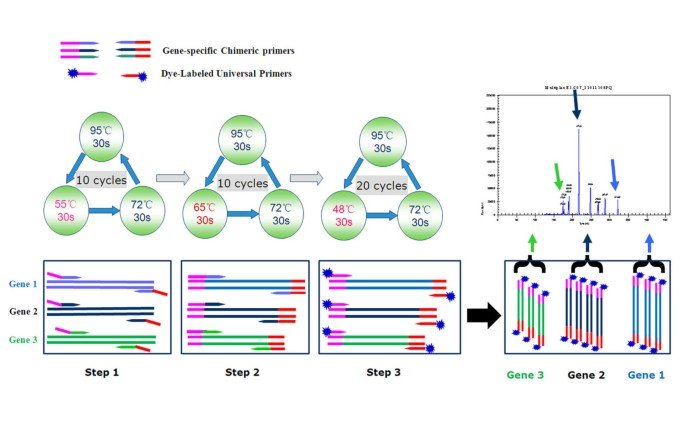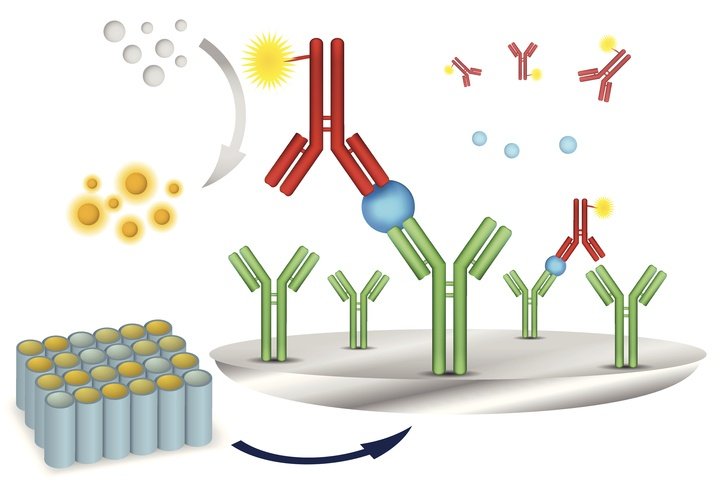
Multiplex Assays for Higher Throughput
The effectively find solutions or treatments for certain complex human diseases; there is a need for a systems-level approach for understanding the environmental cues interplay, cellular behaviors, and intracellular signals underlying the state of the desires. The treatment of such disease requires higher throughput, multiplex strategies, and techniques for measuring quantitative temporal variations of a wide range of protein activities in the network of intracellular signaling. This refers to the description of a single microtiter-based format that simultaneously quantifies protein kinase activities in the phosphatidylinositol 3-kinase pathway (Akt), nuclear factor-kappaB pathway (IKK), and three core mitogen-activated protein kinase pathways (ERK, JNK1, MK2).
https://bmcmicrobiol.biomedcentral.com/articles/10.1186/1471-2180-13-58
As a redundantly specific, reproducible, stringently linear, these parallel higher throughput assays are more sensitive than other techniques, including the classical low-throughput. When a researcher applies it to a sepsis-induced colon epithelial apoptosis model, they can help identify a late phase of Akt activity as a critical cell mediator for quantitatively contributing to the outcome of insulin as an anti-apoptotic cue.
What are multiplex assays?
This refers to a kind of immunological assay. They are known as a bioanalytical method of detection, isolation, or measurement of a target biomolecule. The biomolecule of interest, known as an analyte, is quantified through an antigen or antibody reaction.
The advantages of using multiplex assays
Apart from being a reliable technique for detecting a couple of diseases, the technique has a clear advantage- their throughput potential. This helps in the provision of additional results per sample with lower sample volumes, such as miniaturization. This helps translate to a lower price-per-data point when likened to conventional singleplex assays such as ELISAs. Additionally, multiple analytes measurement in a single sample helps to provide a “total picture” snapshot that data investigators can trust.
It also helps in eliminating the comparison need of data captured at any point in time from various experiments, making the conventional method more vulnerable to user errors. Comparing multiplex assays to other technologies such as multiplex ELISA, multiplex assays help researchers maximize the collected data from a minimum sample volume.
Saving time in research work is important, and this is another advantage the multiplex assays offer investigators while increasing throughput at the same time. Users sometimes need to wait for a couple of hours, even overnight, when using certainly available immunoassays that require incubation. Primary incubation for Bio-Plex is usually between thirty minutes to one hour. Generally, data can be ready within three to four hours, making it one of the most important advantages for enthusiastic people about quick data.

Other research areas of using the multiplex assays
Multiplex assays have been one of the most sought-after techniques for treating different diseases by health agencies across the globe. Combining multiplex assays with the PCR technological development and method of discrimination has brought development confections detection with affordable cost, including the analysis of sample volumes needed.
Researchers in different areas for treatment have widely adopted multiplex assays. Multiplex assays are most active in different research fields such as asthma, allergy, infectious diseases, and other applicable areas. Researchers have dedicated more research effort to test the feasibility of the Luminex xMAP technology for the detection of the autoantibodies to autoantigens, IgE response to grass and tree pollen, virus and bacterial serotypes, and weaponized microbial agents.
Additionally, researchers who are committed to the field of developing vaccines and epidemiology have extensive documentation of the use of multiplex assays for the identification of targets using antibody-based capture or fragment of DNA to every virus or bacteria. The use of monoclonal antibodies to the individual serotypes saw a researcher use Luminex technology for detecting twenty-six serotypes for Streptococcus pneumoniae in serum.
The use of antibody-based multiplex assays by other investigators and researchers has helped characterize microbial pathogens and agents. The adoption of local and real-time RT-PCR, combined with Luminex bead array, helped detect various viruses for identifying disease agents in persons. For the identification of environmental triggering, these reports provide enough feasibility concerning developing multiplex assays.
Moreover, multiplex assays provide users with a wide range of answers simultaneously, which results in data inconsistency. Also, without the addition of confounding variables such as different operators or different buffer systems, users can have a snapshot of the profile they look forward to, regardless of it it is proteins or cytokines.
Applications of multiplex assays
When it comes to the measurement of targets in biofluids, including the circulation and of biomarkers and signaling pathway molecules such as cytokines and hormones, multiplex assays are reliable.
When discovering high-throughput biomarkers, profiling of immune cytokines, and studying with very large patient cohorts, FirePlex-HT provides exact high-performance standards.
Another area researchers can apply multiplex assays is with anything with a limited precious sample such as CSF, neonatal mouse samples, and samples that require spreading over multiple tests.
Conclusion
Multiplex assays have been a reliable source of detecting different diseases. They provide ease and fastness when employed in research works. Fortunately, their advantages are more wide-ranging than just higher throughput. Since they have more applications for clinical research and other areas, investigators can enjoy research works better. It is, however, important to keep consistent incubation times to get the best research outcome. Generally, they are more reliable and help in saving samples for different research works.









